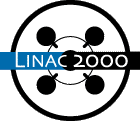
A.NOVOKHATSKI, T.WEILAND, M.KRASSILNIKOV, W.KOCH (TEMF, TU-DARMSTADT), P.CASTRO (DESY, HAMBURG)
The V-code development has been motivated by the necessity of a powerful tool for the beam dynamics on-line simulation. Based on the Ensemble model [1], the V-code provides the possibility of fast and efficient beam dynamics simulation. Such a tool is as important for the accelerator commissioning as for the operating machine. The main principles of the code are the complete accelerator simulation and the immediate data on-line exchange with a given accelerator control system. The structure of accelerators and the features of the Ensemble model determine the choice of the object model for the code elaboration. The V-code has been realized within the object-oriented ideology on the C++ platform, and presents an accelerator as a consequence of beam line elements. Such approach gives the essential advantage in further code extension, as the code can be improved continuously by introducing new element classes. Containing definite accelerator components (e.g. a RF-photoinjector, a quadrupole, a cavity, etc.), these classes can implement new features for beam dynamics, like space charge, wake fields, and others. The present beam line database has been developed for the TESLA Test Facility (TTF DESY) accelerator component description. The results of the on-line beam dynamics simulation for TTF are presented.
[1] A.Novokhatski and T.Weiland, 'The Model of Ensembles for the Beam Dynamics Simulation', Proc. of PACm99, p. 2743.
Comments or Questions to
linac2000@slac.stanford.edu